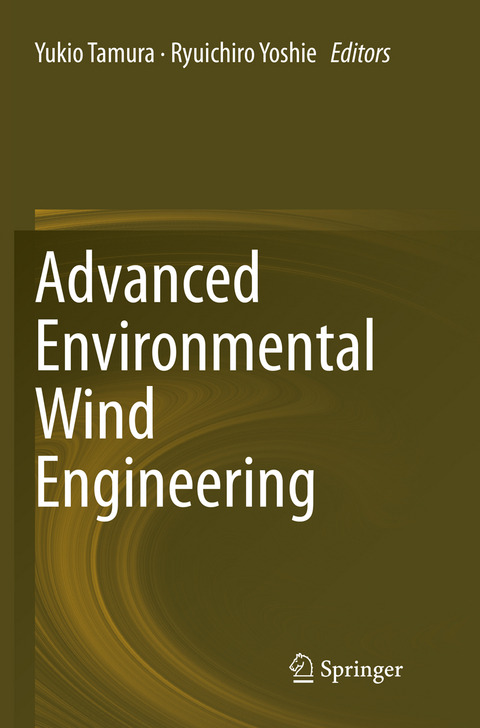
Advanced Environmental Wind Engineering
Seiten
2018
|
Softcover reprint of the original 1st ed. 2016
Springer Verlag, Japan
978-4-431-56727-1 (ISBN)
Springer Verlag, Japan
978-4-431-56727-1 (ISBN)
This book is highly suitable for advanced courses asit introduces state-of-the-art information and the latest research results ondiverse problems in the environmental wind engineering field.
This book is highly suitable for advanced courses as
it introduces state-of-the-art information and the latest research results on
diverse problems in the environmental wind engineering field. The topics include
indoor natural ventilation, pedestrian wind environment, pollutant dispersion,
urban heat island phenomena, urban ventilation, indoor/outdoor thermal comfort,
and experimental/numerical techniques to analyze those issues.
Winds have a great influence on the outdoor
environment, especially in urban areas. Problems that they cause can be
attributed to either strong wind or weak wind issues. Strong winds around
high-rise buildings can bring about unpleasant, and in some cases dangerous,
situations for people in the outdoor environment. On the other hand, weak wind
conditions can also cause problems such as air pollution and heat island
phenomena in urban areas. Winds enhance urban ventilation and reduce those
problems. They also enhance natural ventilation in buildings, which can reduce
the energy consumption of mechanical ventilation fans and air conditioners for
cooling. Moderate winds improve human thermal comfort in both indoor and
outdoor environments in summer. Environmental wind engineering associated with
wind tunnel experiments and numerical analysis can contribute to solutions to
these issues.
This book is highly suitable for advanced courses as
it introduces state-of-the-art information and the latest research results on
diverse problems in the environmental wind engineering field. The topics include
indoor natural ventilation, pedestrian wind environment, pollutant dispersion,
urban heat island phenomena, urban ventilation, indoor/outdoor thermal comfort,
and experimental/numerical techniques to analyze those issues.
Winds have a great influence on the outdoor
environment, especially in urban areas. Problems that they cause can be
attributed to either strong wind or weak wind issues. Strong winds around
high-rise buildings can bring about unpleasant, and in some cases dangerous,
situations for people in the outdoor environment. On the other hand, weak wind
conditions can also cause problems such as air pollution and heat island
phenomena in urban areas. Winds enhance urban ventilation and reduce those
problems. They also enhance natural ventilation in buildings, which can reduce
the energy consumption of mechanical ventilation fans and air conditioners for
cooling. Moderate winds improve human thermal comfort in both indoor and
outdoor environments in summer. Environmental wind engineering associated with
wind tunnel experiments and numerical analysis can contribute to solutions to
these issues.
Design procedures for natural
ventilation.- Theoretical models of envelope flow - steady and unsteady.- Ventilation
Flow Structure and High-precision Ventilation Network Model.- Passive Cooling
of Buildings-Present and Future Needs - Recent Progress on Passive Cooling
Convective Technologies.- Thermal Comfort Inside and Outside Buildings.-
Pedestrian wind environment around tall buildings.- Wind-induced dispersion of
pollutants in the urban environment.- Trends in the field of quality assurance
of urban flow and dispersion models.- Wind Tunnel Experiment and Large Eddy Simulation
of Pollutant/Thermal Dispersion in Non-Isothermal Turbulent Boundary Layer.
| Erscheinungsdatum | 27.08.2018 |
|---|---|
| Zusatzinfo | 55 Illustrations, color; 58 Illustrations, black and white; VII, 196 p. 113 illus., 55 illus. in color. |
| Verlagsort | Tokyo |
| Sprache | englisch |
| Maße | 155 x 235 mm |
| Themenwelt | Naturwissenschaften ► Biologie ► Ökologie / Naturschutz |
| Naturwissenschaften ► Geowissenschaften | |
| Naturwissenschaften ► Physik / Astronomie ► Mechanik | |
| Naturwissenschaften ► Physik / Astronomie ► Strömungsmechanik | |
| Technik ► Bauwesen | |
| Technik ► Umwelttechnik / Biotechnologie | |
| Schlagworte | computational fluid dynamics • Natural Ventilation • Pollutant Dispersion • Urban Heat Island • Wind Tunnel Experiment Technique |
| ISBN-10 | 4-431-56727-5 / 4431567275 |
| ISBN-13 | 978-4-431-56727-1 / 9784431567271 |
| Zustand | Neuware |
| Haben Sie eine Frage zum Produkt? |
Mehr entdecken
aus dem Bereich
aus dem Bereich


